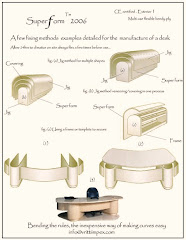
The so called Charlotte Medal,read about it below.


Being 335 tons, 105 ft long and 28 ft at the beam, The Charlotte held 88 male and 20 female convicts. Built in 1784 and Skippered by Master Thomas Gilbert, her return to England saw her doing the London - Jamacia run until she was sold to a Quebec merchant in 1818 and was then lost off the coast of Newfoundland that very same year.
The Charlotte was a First Fleet transport ship, built on the River Thames in 1784, and weighing 345 tons. She was a heavy sailer, and had to be towed down the English Channel for the first few days of the voyage. Her master was Thomas Gilbert, and her surgeon was John White, principal surgeon to the colony. She left Portsmouth on 13 May 1787, carrying eight-eight male and twenty female convicts, among them the later-to-be-famous Mary Bryant, and arrived at Port Jackson, Sydney, Australia, on 26 January 1788. She left Port Jackson on 6 May 1788 bound for China to take on a cargo of tea, under charter to the East India Company. On her return to England on 28 November 1789 she was sold to a firm for the London to Jamaica run, and was lost off Newfoundland in November 1818.
Medal made by the first person to be hanged in the new colony.
07
07
2008
The Charlotte Medal 1788 - Botany Bay Birthplace of Colonial Art
Posted by: admin in History, News
Further reading on First Fleet.
The Charlotte Medal is believed to be have been engraved by convict Thomas Barrett (first man hanged in the new colony), for Surgeon White, while at anchor in Botany Bay. It is silver(74mm, 37.58gms) engraved on both sides of a thin silver disc, obverse, fully-rigged ship secured to a buoy, sun near horizon to left, crescent moon and stars in the sky. Inscribed in left field ‘The Charlotte at anchor/in Botany Bay/ Jany.th20,/1788′, inscribed on reverse a full description of the voyage from London to Botany Bay (13,106 miles) in nautical terminology. Contemporary in style this medallion was engraved on board the ‘Charlotte’ whilst the ship was anchored in Botany Bay between 20th and 26th January. This medal is widely acclaimed as the first Australian Colonial work of art and an icon of the foundation of our nation and as such is of immense historical interest to Australia. The ‘Charlotte’ was built on the Thames in 1784. Her length was 105 feet, the maxium breadth between her wales was about 28 feet 2 1/2 inches, and her tonnage 38 tons. The ship featured two decks and three masts, but had no embellishments such as a figurehead or galleries, and contemporary records describe her as ’square’sterned.’ She was noted in the official register as ‘bargue-built’. The ‘Charlotte’, along with other ships destined to become First Fleet transports was chartered by the Admiralty late in 1786 from her owner, a Mr Matthews. She was fitted out at Deptford and in January, 1787, after making her way to Plymouth, embarked with her prisoners. The First Fleet weighted anchor on 13th May 1787, at the Motherbank in the Channel. It comprised two warships, ”Sirius” and “Supply”, three storeships, “Borrowdale”, “Fishburn” and “Golden Grove” and six convict transports, “Alexander”, “Charlotte”, “Friendship”, Lady Penrhyn”, “Scarborough” and “Prince of Wales”. The “Charlotte” complement consisted of crew, marines(one captain, two lieutenants, two sergeants, three corporals, one drummer and 35 privates) and convicts (89 male and 20 female). The master of Captain Thomas Gilbert, and the Surgeon, John White. John White was the Chief Surgon of the Colony and a keen sketcher.(Source: Marine Captain Watkin Tench ‘A Complete Account of Settlement at Port Jackson’, London 19793). The Fleet arrived at Teneriffe, The Canaries, on 3rd June 1787 by which time “Charlotte” had 15 men on the sick list, one man had already died, and during the stay, a second death occurrred. On 10th June the Fleet sailed from Teneriffe and during the crossing of the equator, the “Lady Penrhyn”, whose crew were busy playing King Neptune, almost collided with “Charlotte”. On 13th October, and after a stay, began the final leg of the voyage to Australian on 13th November. The Supply finally arrived at Botany Bay on 18th Janury 1788 and Phillip and some of his men came ashore at Yarra Bay at 3pm that afternoon. The other ships arrived over the following 2 days with the Charlotte arriving on the 20th. It had been a somewhat circuitous voyage of 15,063 nautical miles with 184 days of actual sailing time. In early May 1788 “Charlotte” under charter to The East India Company sailed for China from whence she shipped cargo of tea to England. She was then sold to a firm of London merchants, Bond & Co.and began the next stage of her career, the London to Jamaica run. “Charlotte” ended her career under the ownership off John Jones, a merchant in Quebec, Canada. In 1818 she was lost of Newfoundland. (References: Hawkins, J.B. “Nineteenth Century Australian Silver.”, Woodbridge 19, Vol 1, page 31; article by Dr John M Chapman “The Solution of the “Charlotte” Enigma” in the Journal of the Mumismatic Association of Australia, Vol 9, pages 28-33.)




No comments:
Post a Comment